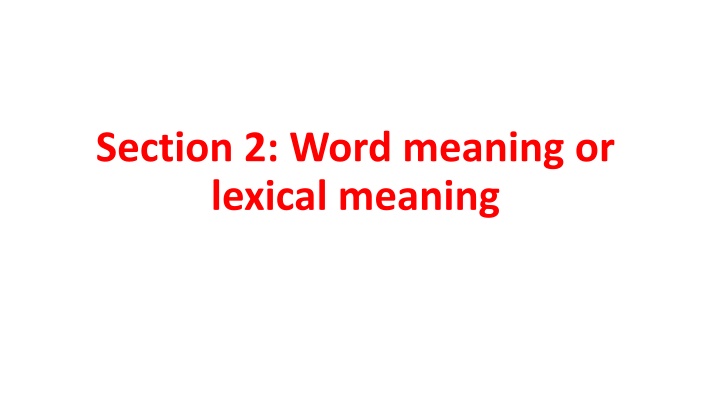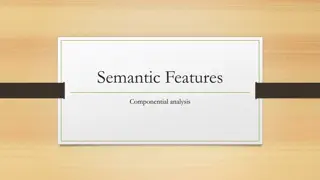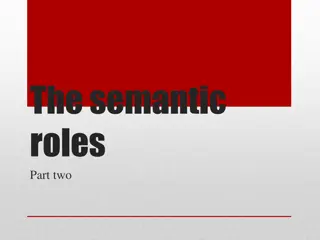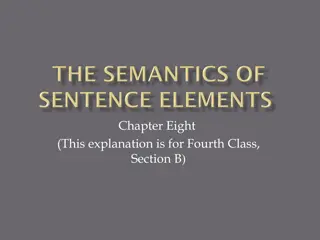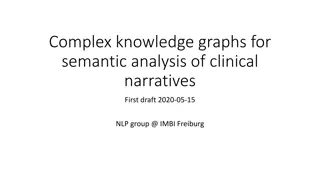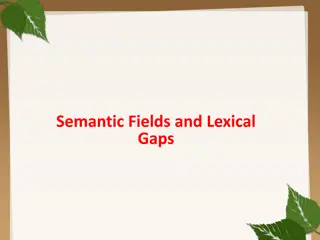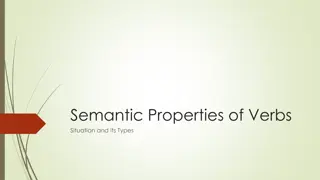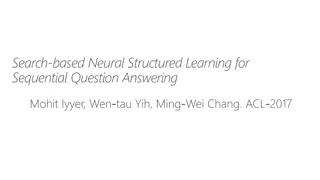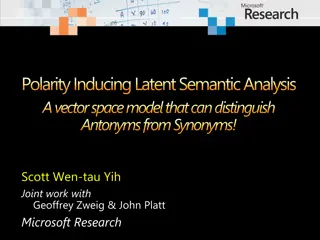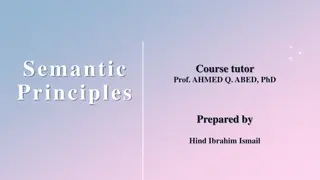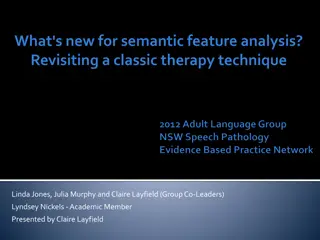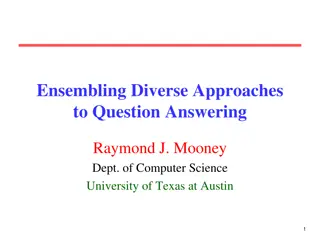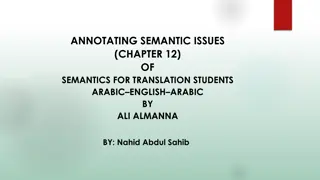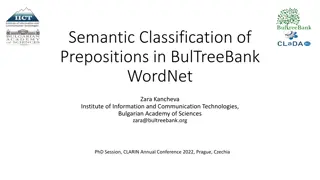Semantic Features in Language
Semantic features, referents, references, and senses play crucial roles in understanding the meaning of words and linguistic expressions. Explore how semantic components define words and how referents relate to real-world entities. Dive into the internal relationships that senses establish within a language's vocabulary.
Download Presentation

Please find below an Image/Link to download the presentation.
The content on the website is provided AS IS for your information and personal use only. It may not be sold, licensed, or shared on other websites without obtaining consent from the author.If you encounter any issues during the download, it is possible that the publisher has removed the file from their server.
You are allowed to download the files provided on this website for personal or commercial use, subject to the condition that they are used lawfully. All files are the property of their respective owners.
The content on the website is provided AS IS for your information and personal use only. It may not be sold, licensed, or shared on other websites without obtaining consent from the author.
E N D
Presentation Transcript
Section 2: Word meaning or lexical meaning
2.1. Semantic features Definition Semantic features or semantic components or semantic properties are the smallest units of meaning in a word. We identify the meaning of a word by its semantic features. Example: father: [+human], [+male], [+mature], [+parental] and [+paternal]. hen: [+animate], [+bird], [+fowl], [+fully grown] and [+female].
2.1. Semantic features - Characteristics 1. A redundancy rule: If father is [+human], it is therefore [ inhuman]; If father is [+male], it is therefore [ female]; 2. Different words may share the same semantic feature: Doctor, engineer, teacher, physicist, chemist, tailor, hairdresser, etc. all share the same semantic feature [+professional] Mother, father, son, daughter, brother, sister, grandparent, aunt, uncle, etc. are all [+kinship]
2.1. Semantic features - Characteristics 3. The same semantic feature can occur in words of different parts of speech. [+female] is part of the meaning of the noun mother, the verb breast-feed the adjective pregnant. [+educational] is a semantic feature found in the nouns school, teacher, textbook, etc. the verbs teach, educate, instruct, etc.
2.1. Semantic features - Characteristics 4. The semantic properties of words determine what other words they can be combined with. (Fromkin and Rodman,1993: 148-149) *My brother is an only child. *The bachelor is pregnant. *Colorless green ideas sleep furiously. the above sentences that are grammatically correct and syntactically perfect but semantically anomalous.
2.2. Referent, reference and sense A referent is an object or an entity in the real world or in the world of your imagination, e.g. your school, your classmates, your teacher, the idealistic working conditions you have ever dreamed of, etc. The reference of a word or a linguistic expression is the relationship between that word or expression and the thing (book), the action (read), the event (graduate from university), the quality (sincerity), etc. it refers to.
2.2. Referent, reference and sense The sense of a word or a linguistic expression shows the internal relationship between that word or expression and others in the vocabulary of a language. Ex1. Teacher and student have the sense relationship of the former is the one who gives a lesson and the latter is the one who has the lesson given by the former. Ex2. A dog is chasing a cat has some sense. However, a dog is human has no sense.
Identify referent, reference and sense via their main features.
Distinction between variable reference, constant reference and co-reference When the same linguistic expression refers to different referents, it has variable reference: the present prime minister used in Britain in 1944 is Mr. Churchill and in 1982 is Mrs. Thatcher. When one linguistic expression refers to one and the same referent, it has constant reference: the sun, the moon, Halley s comet, the People s Republic of China, Angola, the United Nations, FIFA, UNESCO, etc. When two or more linguistic expressions share the same referent, they have co-reference: the morning star and the evening star both refer to the planet called Venus.
